Scientists can study the colorful life of animals and plants in the natural environment by observing and recording images through a microscope.
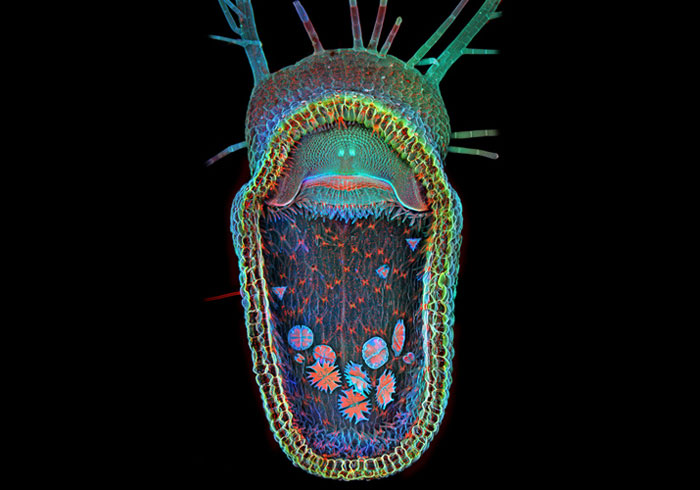
Bladderwort plants are considered common carnivorous plants, often living in water or flooded areas, with small bubble-like traps on their leaves. In the photo is a special bait trap of this carnivorous plant.
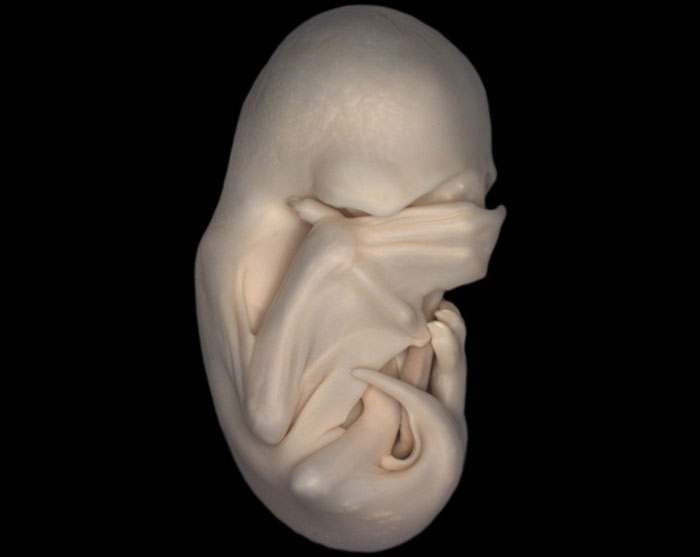
Embryo of a black lop-eared bat (Molossus rufus). During this stage, the fingers grow longer and form flexible skin membranes connecting the arm bones to the fingers, and the bat wing membranes cover the face.
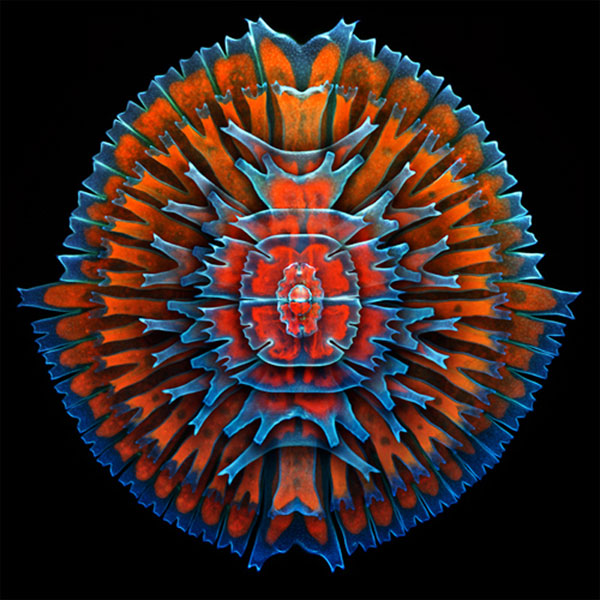
Image of a complex group of 7 species of unicellular freshwater algae. The red color in the photo comes from the luminescence of chlorophyll.
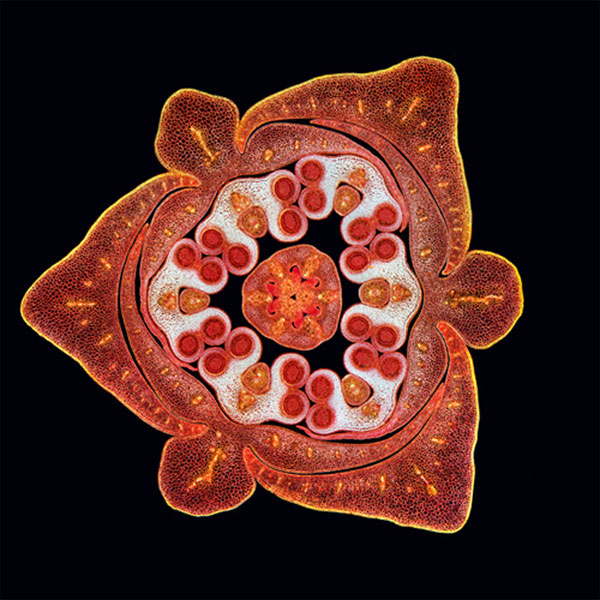
Cross-sectional image of a lily flower bud.
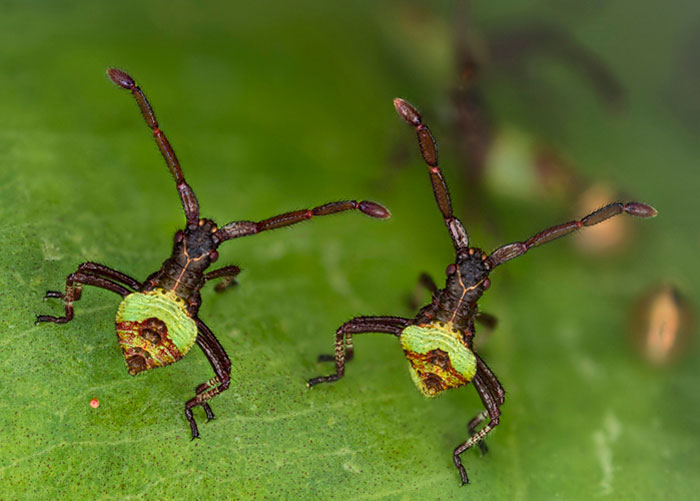
Two Gonocerus acutengulatus beetles, two hours after birth, are 3mm in size.
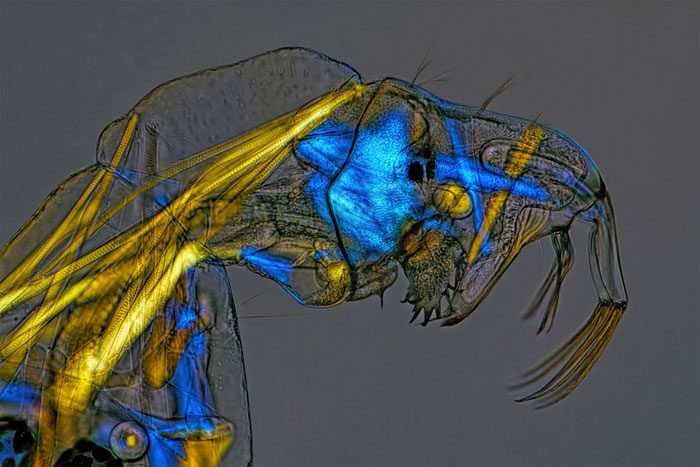
Glassworm mosquito larvae (Chaoborus). Using special photography methods and lighting techniques, images of larvae can help viewers clearly see their muscle system.
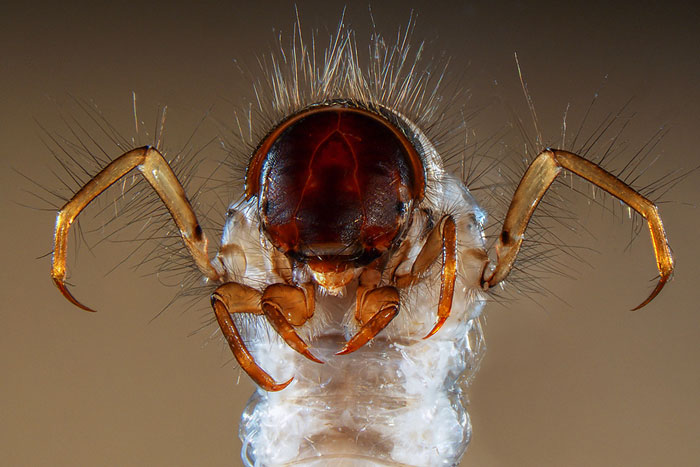
Head and legs of caddisfly larvae. This is an insect found in Europe and North America, often living in freshwater, near sandy beaches, gravel beaches, and rocks.
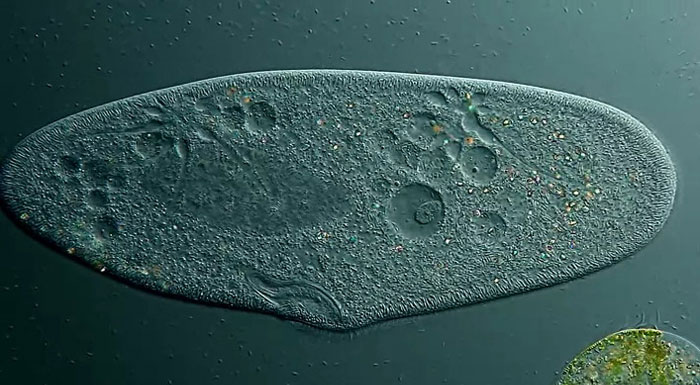
Movement of Paramecium, a representative of the grass worm class. Microscopic images show that the bacteria move using swimming cilia. Thanks to these swimming feathers, it swims very quickly in the water and can both move forward and rotate.





